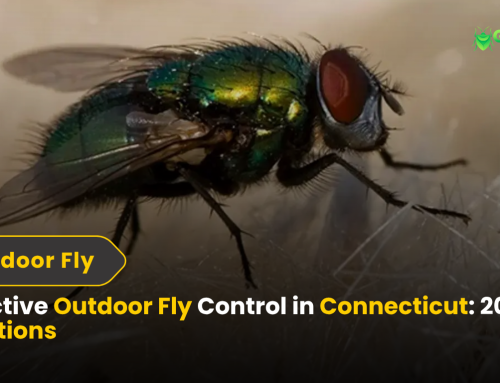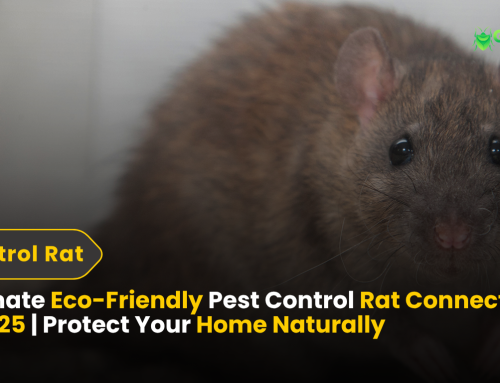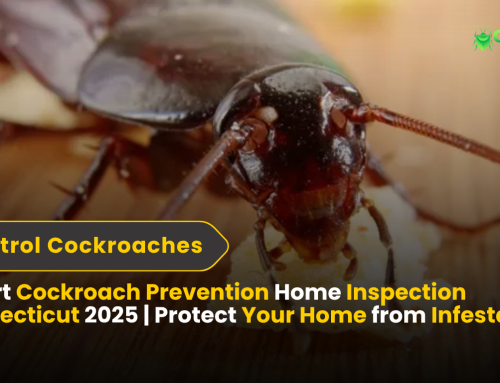7 Effective Rodent Control Methods: Solutions to Your Questions
Rodents such as rats and mice are more than just a nuisance they pose significant health risks, cause extensive property damage, and can even compromise the structural safety
These Pests are remarkably adaptable, thriving in urban, suburban and rural environments alike. As more as human activity grows, so does the prevalence of rodents, making rodent control a critical issue for homeowners, business and communities
In this blog we will guide you and provides a comprehensive look at a effective rodent control methods that you need to know, answering common questions and offering practical solutions to prevent infestations.Whether you are dealing with a sudden rodent invasionor aiming to implement preventive measures,this guide is designed to equip all the basic and advanced knowledge you need to tackle the problem effectively.
1. Understanding the Depth of Rodent Problem
What Actuall Rodents Are ?
Rodents are kind of small mamalas that belog to the order rodentia. Known for their continuously growing incisors, they are well-adapted to gnawing through tough materials, including wood, plastic, and even concrete. The most common rodent species encountered in pest control scenarios include:
- Rats:
- Rattus rattus (black or roof rat): Agile climbers often found in attics and upper levels of buildings.
- Rattus norvegicus (brown or Norway rat): Ground-dwellers that inhabit basements, burrows, and sewers.
- Mice:
- Mus musculus (house mouse): small and adaptable, found in both urban and rural settings.
- Squirrels: While not typically indoor pests, some species can become problematic, especially in attics.
Each species has unique behaviors and habitat preferences, makin it essential to correctly identify the type of rodent when addressing an infestation.
Why Are Rodents a ProblemFor Everyone?
Rodents are far from harmless.They create numerous challenges, including:
- Health Hazards:
- Rodents are carriers of diseases such as hantavirus, leptospirosis, and salmonella, which can be transmitted through droppings, urine, and saliva.
- They harbor fleas and mites, which can spread additional diseases to humans and pets.
- Property Damage:
- Rodents have powerful incisors that can chew through wiring, insulation, and even structural wood.
- Electrical damage caused by gnawing increases the risk of fires.
- Food Contamination:
- A single rodent can contaminate significant quantities of stored food, making it unsafe for consumption.
- Reproductive Speed:
- Rodents reproduce rapidly. A single pair of rats can produce up to 2,000 offspring annually, making infestations difficult to control if not addressed promptly.
What Attracts Rodents to Your Space?
Rodents are opportunistic and seek environments that meet their basic needs:
- Food Sources:
Crumbs,improperly stored grains, pet food anf garbage bins are common attractions of rodents . - Water Sources:
Water sources are directly increase the lfe of rodents. Rodents require water to survive and are often found near leaky pipes, condensation, or standing water. - Shelter:
Cluttered spaces, wall voids, baseements,attics, and undisturbed storage areas providethe idea; conditions for nesting and reproduction.
Understanding these factors in the first step in effective rodent prevention
2. Signs of a Rodent Infestation
Detecting a rodent infestation early can save you significant time, effort and money. Here are the telltale signs to look for:
How Do You Know You Have Rodents?
- Droppings:
Rodents dropping are small, dark, and pellet sha[ed often found near food sources, in cabinets, or along baseboards. - Gnaw Marks:
Chewed wires, furniture, and packaging are clear signs of rodent activity - Nests:
Rodents build nests using shredded paper, fabric, and plant materials. Look for these in hidden areas like wall voids or storage boxes. - Noises:
Scratching, scampering, or squeaking noises—especially at night—indicate rodent activity. - Tracks and Smudges:
Dusty surfaces may reveal footprints or tail drag marks, while greasy smudges along walls indicate frequent travel paths.
Can You Prevent Infestations Before They Start?
Yes its possible if you apply these methods in a right way. Prevention is the most effective way to avoid a rodent problem. Here’s how:
- Seal Entry Points: Use steel wool, caulk, or metal flashing to close gaps around doors, windows, vents, and utility lines.
- Store Food Properly: Keep food in airtight containers and avoid leaving pet food out overnight.
- Eliminate Clutter: Declutter basements, attics, and storage spaces to reduce hiding spots.
- Maintain Cleanliness: Regularly sweep floors, take out the trash, and clean food preparation areas.

3. Rodent Control Methods: Traditional and Modern
Trapping Methods
Traps are one of the most common tools for rodent control. They are effective for smaller infestations and allow you to monitor success.
- Snap Traps:
- Quick and humane when properly used.
- Ideal for individual rodents in homes or small spaces.
- Glue Traps:
- Non-lethal initially but inhumane.
- Best avoided due to ethical concerns.
- Live Traps:
- Capture rodents without killing them.
- Requires relocation at least a mile away to prevent return.
Chemical Control Methods
Chemical solutions are effective for large-scale infestations but should be used with caution.For chemical control methods you need a pest control service team which apply all these chemical according to the pest condition
- Rodenticides:
- Poisons kill rodents but pose risks to pets and non-target species.
- Always follow label instructions and consider professional application.
- Fumigation:
- Effective for severe infestations in enclosed spaces.
- Requires temporary evacuation and professional handling.
Natural and Eco-Friendly Methods
- Ultrasonic Devices:
- Emit sound waves to repel rodents.
- Best used as part of a broader control strategy.
- Natural Repellents:
- Substances like peppermint oil, ammonia, and cayenne pepper can deter rodents.
- Needs regular reapplication.
- Predators:
- Encouraging natural predators such as cats or owls can help control outdoor populations.
4. Integrated Pest Management (IPM)
What Is IPM?
Integrated Pest Management is a holistic approach that combines multiple control methods to ensure long-term effectiveness.
Steps include:
- Inspection: Identify infestation hotspots.
- Exclusion: Prevent future access by sealing entry points.
- Sanitation: Eliminate attractants like food and water.
- Control: Employ targeted traps or baits where necessary.

5. FAQs About Rodent Control
Q1: How Can I Rodent-Proof My Home?
Seal all entry points, store food securely, and maintain cleanliness.
Q2: How Long Does It Take to Eliminate Rodents?
Small infestations can be controlled within a week; severe ones may require months.
6. Expert Tips for Long-Term Rodent Control
- Regular Inspections: Inspect your property every quarter.
- Educate Others: Ensure household members understand the importance of prevention.
- Monitor Progress: Use tracking powders or monitoring stations to assess ongoing activity.
7. Future Trends in Rodent Control
- AI-Powered Monitoring: Sensors that detect activity in real-time.
- Sterilization Programs: Use of contraceptives to reduce populations sustainably.
- Green Solutions: Increased focus on non-toxic, biodegradable repellents.
Conclusion
Rodent control isn’t just about resolving a noticeable issue — it’s tied in with safeguarding your wellbeing, property, and true serenity. Rodents can cause huge harm, spread infections, and replicate quickly, making it crucial for tackle invasions quickly and really. By figuring out rat conduct, perceiving the early indications of an invasion, and carrying out a blend of preventive and control systems, you can oversee and decrease the gamble of rat issues.
Anticipation is your most memorable line of guard. Basic estimates like fixing section focuses, keeping up with neatness, and taking out food and water sources can go far. At the point when pervasions happen, a mix of techniques, from traps to eco-accommodating anti-agents, frequently yields the best outcomes. For serious cases, proficient vermin control administrations can give focused on and effective arrangements.
As innovation advances, future patterns like simulated intelligence fueled checking and green arrangements guarantee more secure, more practical techniques for rat control. Remaining educated and proactive guarantees your property remains rat free in the long haul.
Rodent control is a continuous exertion, yet with cautiousness and the right methodology, you can keep your home or business safe and vermin free. Try not to stand by — act immediately to shield your space and keep pervasions from heightening.










